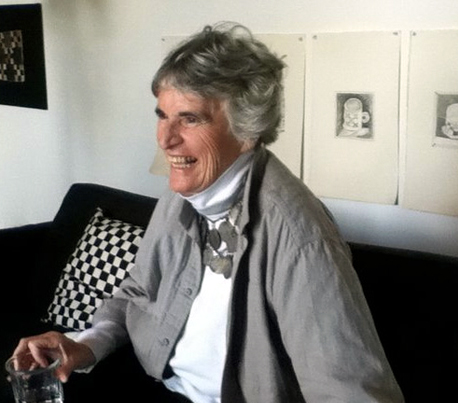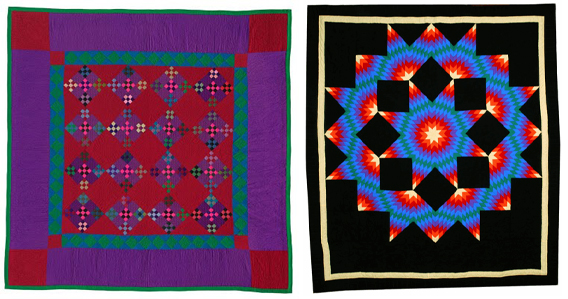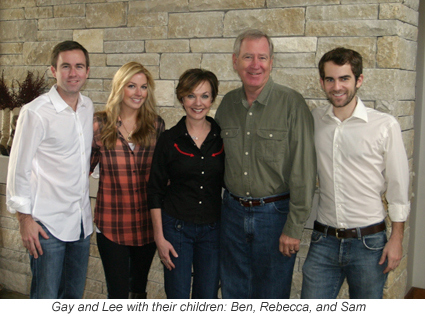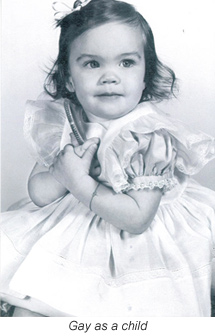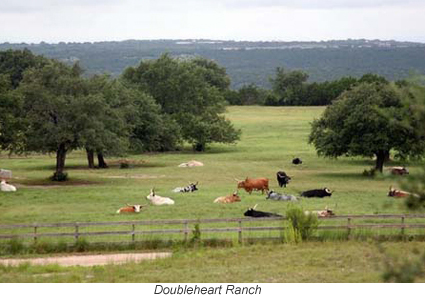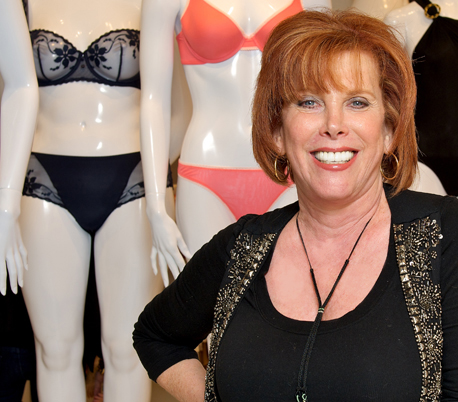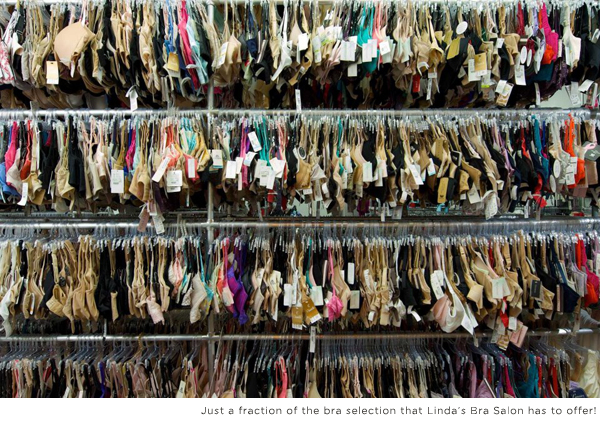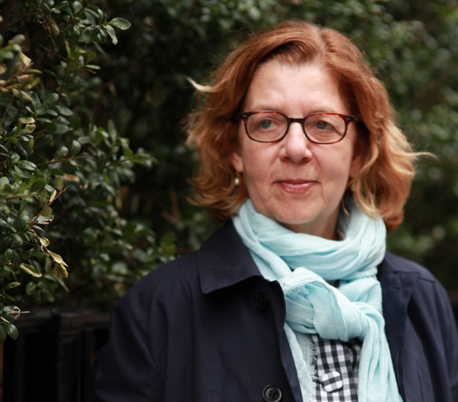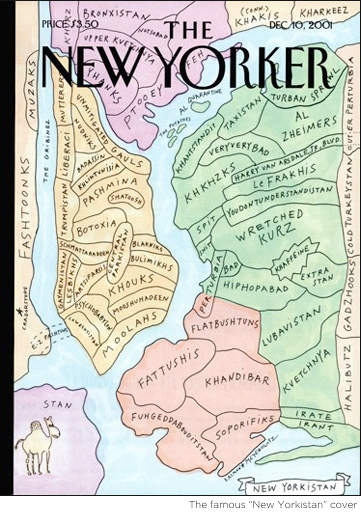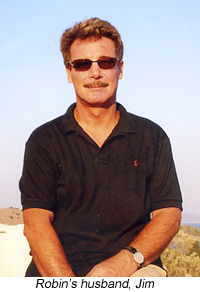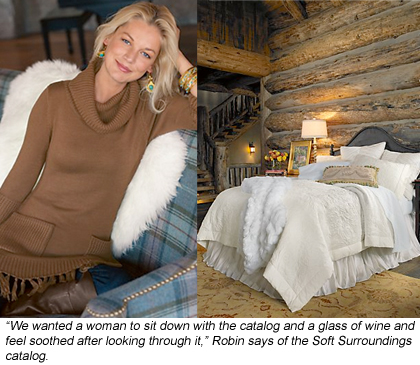Meet Candida Royalle

Location: North Fork, New York
Age: 59
Marital Status: Divorced
Education: Parsons School of Design, Majored in Fashion Illustration, City College in New York Majored in Psychology and Art.
So Candida launched her own film company, Femme Productions, which set out to produce adult films from a female perspective. They have since become wildly popular with women around the world, and Candida has been praised as a pioneer by feminists as well as leaders of the adult film industry.
“I think it’s important to show women who have grown up with so much shame and poor body image that sex is beautiful and every part of us is erotic and lovely.”
The warm, confident and spunky 59-year-old has produced over 20 films, authored a book, and owns her own line of intimate products.
Candida is, unabashedly, a woman on top.
Where are you from?
Manhattan. Now I live out in the country, on the North Fork.
Are you married?
I was married. I’m divorced. A few years ago, I fell in love and experienced the most fulfilling sex of my adult life…in my fifties! I was with that man for five years and engaged. I broke it off because I felt we were incompatible in other ways. But, I think it shows that one is never too old to have a fulfilling intimate life. And, I’m sure there’s another great love affair in me.
You’ve been called a pioneer in the world of erotica… Do you agree?
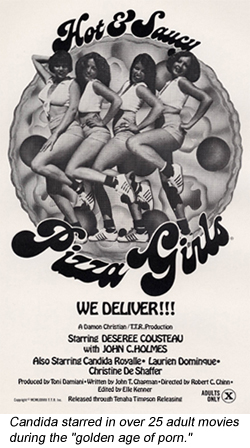 I do. Women had been left out of the equation in erotica. Then, in the mid 80s, because of the women’s liberation movement, women were receiving much more permission to explore their sexuality. They were curious. They wanted to look at movies and sexy pictures but there was nothing really for them. I thought this would be such a great challenge, to come up with movies that were sexy, much more egalitarian and that represented a women’s point of view.
I do. Women had been left out of the equation in erotica. Then, in the mid 80s, because of the women’s liberation movement, women were receiving much more permission to explore their sexuality. They were curious. They wanted to look at movies and sexy pictures but there was nothing really for them. I thought this would be such a great challenge, to come up with movies that were sexy, much more egalitarian and that represented a women’s point of view.
How have things changed in the erotica industry since you started your company?
There’s definitely a very strong market for women viewers now. It took the daughters of my generation, growing up with mothers who were more open minded, to be comfortable with it. It took women’s studies programs in colleges.
How is what you do different then adult movies produced by men?
I was lucky. Since I was funded independently, I didn’t need any backing from existing adult film companies. I was able to break away from your typical porno formula with a certain number of scenes, sex acts and camera angles….I focus on sensuality, foreplay and afterplay rather than on the acrobatics of sex. The sex is less graphic and the scenes do not end with the typical “money shot” of men’s gratification. My films portray fantasies common to women. They have more involved story lines because I believe women like context, they want to know, “Why are these people here?” They feature women who seem intelligent, have lives, careers, real issues. It’s more egalitarian.
What do you hope women take away from your films?
My aim is to help women feel comfortable with their sexuality. It does get hot and heavy. To omit the genitals is like saying, “Nah, you don’t want to look at that,” and that’s not what I’m about. Real love-making is part of life and can look very beautiful if it’s shot in a certain way.
Is there ageism in the adult film industry?
I think there is ageism in entertainment in general, in Hollywood, in the fashion world. I try to challenge that. In one of my movies, Urban Heat, I featured a woman named Chelsea Blake who was probably between 45 and 50. There’s a scene where she has to take a freight elevator because the main elevator is broken. She ends up seducing the young freight elevator operator. Women love this scene because she was so comfortable with her body, despite her age.
A film I did called “Three Daughters” was endorsed by the American Association of Sex Educators, Counselors and Therapists for positive sexual role modeling and for representing people of all different ages. There’s a lovely scene between a husband and wife. Gloria Leonard, who was about 50 at the time, plays the wife. She is in the attic, upset because her daughters are leaving home. Her husband finds her up there and she tells him why she is upset. He tells her to think of all the times they will have to share together and they proceed to have the most tender sex.
What are you working on now?
I’m working on a new line of movies called Femme Chocolat. It’s the same concept as my other films but featuring couples of color. The last one I did was actually in 2007. I’ve been on a hiatus from producing while I help launch the careers of other women directors. I’m finding the most innovative movies are coming out of Europe. I’m taking on the distribution rights and launching them in U.S. and Canada.
What about your line of products?
My product line, Natural Contours®, is ongoing. Natural Contours® follow the same concept as my movies. They’re erotic, sexual products with integrity. I wanted any woman to feel comfortable owning one. We just launched the BonBon. I’m pushing it as a great Valentine’s Day gift. It’s better than chocolate–more fun and zero calories.
What is your passion project?
Animal rescue; I cleaned up my entire neighborhood in Brooklyn of the feral population. I placed about 30 cats and kittens in homes. I donate to a lot of animal organizations and environmental groups. I also donate 10 percent of proceeds from one of my products, Petite Pink™ , to a group called Breast Cancer Action in San Francisco.
How would your describe your style?
 Eclectic, stylish and sophisticated. I went to college for fashion, then I became a women’s liberation hippie for a while and cast it all off. Later in life, I got involved with a very colorful group of theatrical performers in San Fransisco. We were very campy; we wore clothes from the 40s and 50s. Slowly, I evolved back to my fashion roots and lately I’ve been more streamlined, classic and elegant.
Eclectic, stylish and sophisticated. I went to college for fashion, then I became a women’s liberation hippie for a while and cast it all off. Later in life, I got involved with a very colorful group of theatrical performers in San Fransisco. We were very campy; we wore clothes from the 40s and 50s. Slowly, I evolved back to my fashion roots and lately I’ve been more streamlined, classic and elegant.
Who are your favorite designers?
I like Donna Karan a lot. I’ve always loved Valentino–sophisticated, long lines, classic style that will stay in fashion for a really long time. I don’t like frilly or too much color.
Beauty routine?
It’s all very holistic – you have to do it from the outside in. I haven’t eaten red meat since 1985. I eat a lot of fish, vegetables, grains and drink tons of water. I use only natural beauty products. Every year we go to the Natural Products Expo in Anaheim to display our Natural Contours® line and I get to see all these wonderful new products. There’s a line that’s very lovely called BeeCeuticals, it’s taken from royal bee jelly and very good for your skin. There’s also one called Madara, and it’s taken from plants that are harvested in Latvia. It’s beautiful, beautiful quality. I love Dr. Hauschka products. I use her facial toner. It’s like a dream on my skin; beautiful, pure, organic, herbal stuff.
What is your exercise routine?
I’ve danced since I was ten and studied yoga for ten years. I’m not a freak that goes to the gym 6 times a week, but I think dancing is the most healthy, joyful thing you can do for your body. I have my own hybrid workout that I do at home that includes dance, yoga, calisthenics, body toning, and free weights to protect my bones.
Do you have a signature fragrance?
My favorite for last few years is Olene from Diptyque’s flagship boutique in Paris. It’s from the Oleander flower. It’s just lovely; not heavy or weighted down – it’s just pure flower essence.
What’s your advice to other FOFs on looking and feeling your sexiest?
Men don’t have a scorecard where they are checking off what parts of your body are good and what aren’t. What turns a man on is seeing his partner in the throws of passion; that he can actually bring her to ecstasy. They just want a woman who gets into it with them. Embrace who you are with all your uniqueness and quirkiness. None of us have perfect bodies.


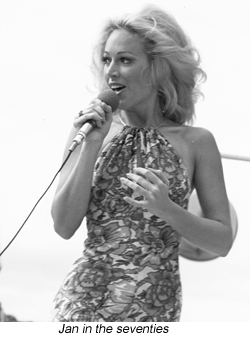
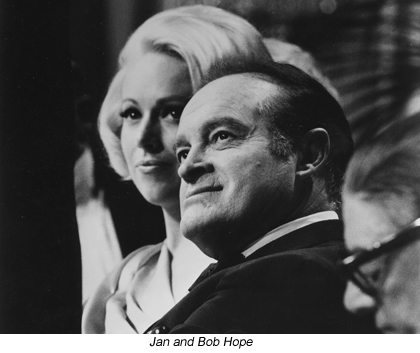

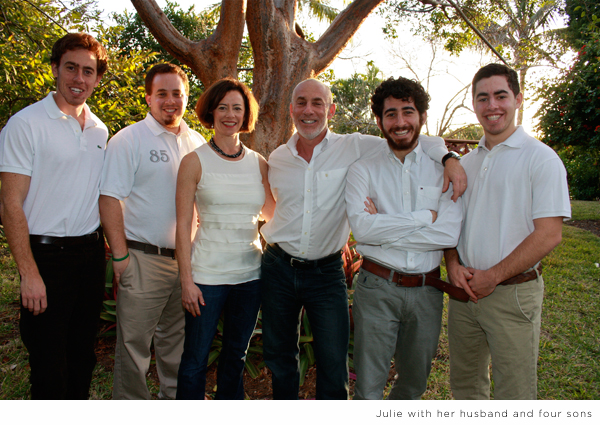

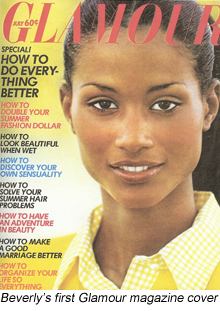
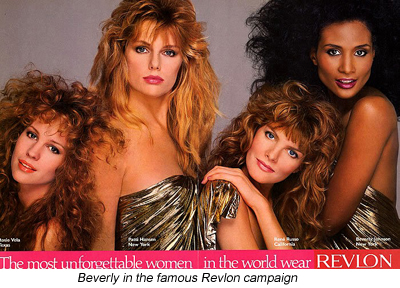

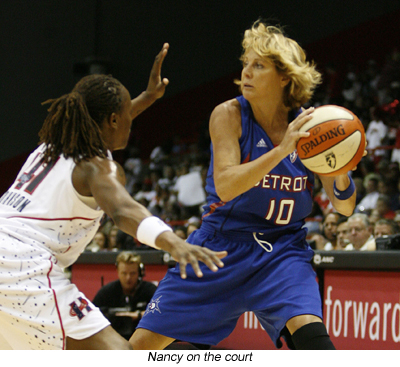
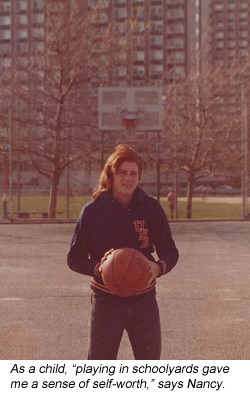 There was nothing like being in the schoolyard and the boys going, “We’ll take the girl.” That was almost like them saying, “I love you.” It was an incredible moment of self-esteem. It made me feel so good about what I was doing.
There was nothing like being in the schoolyard and the boys going, “We’ll take the girl.” That was almost like them saying, “I love you.” It was an incredible moment of self-esteem. It made me feel so good about what I was doing.